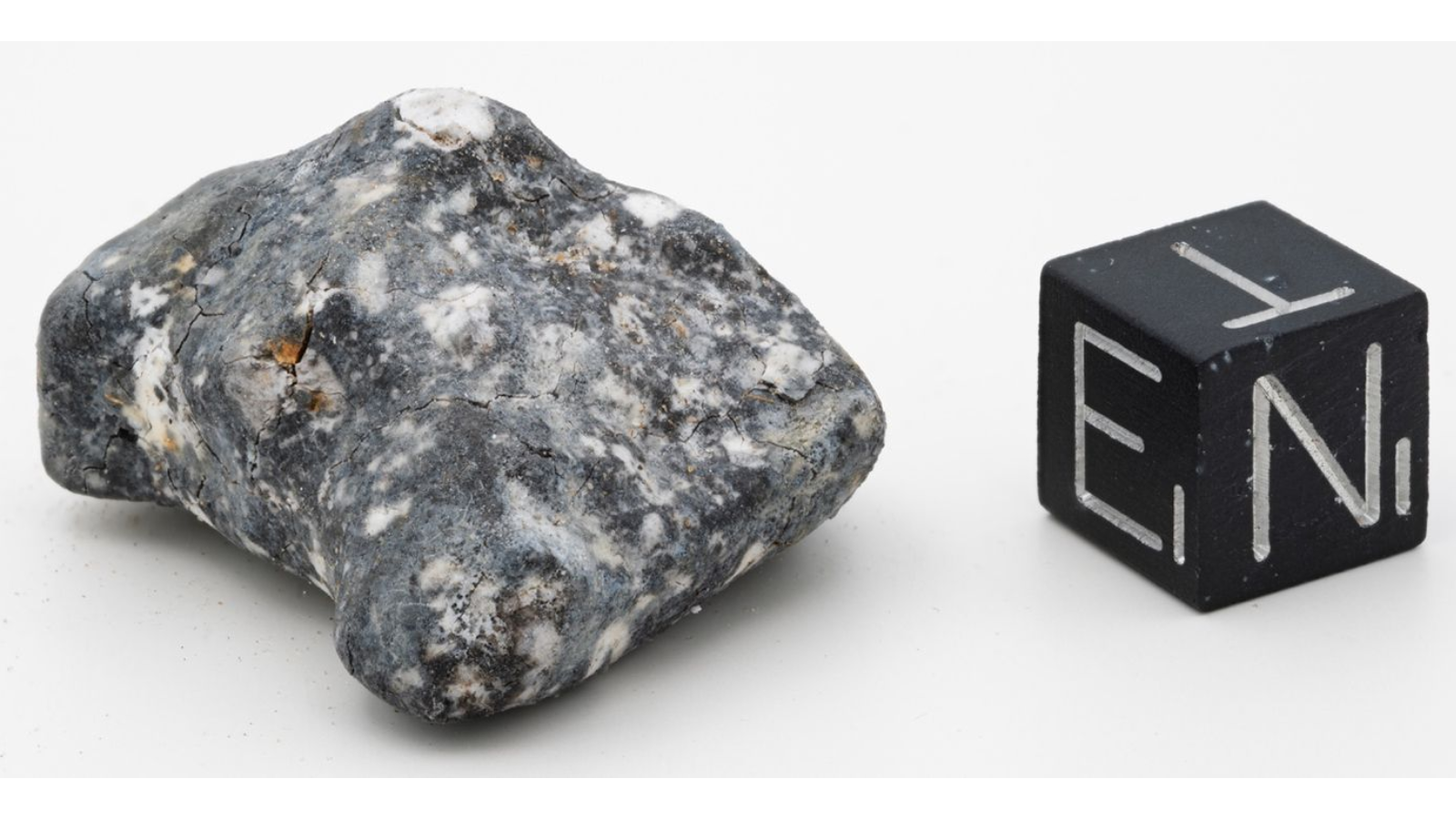Asteroid 2024 BX1 fragments confirmed to be rare meteorites as old as the solar system itself
It's very cool: We have fresh material to look at that may have been the building blocks from which Earth was formed.

Fragments of an asteroid that exploded over Germany on Jan. 21 and were recovered five days later have been confirmed to be a rare space rock type that could help shed light on Earth's origins.
As Space.com initially reported on Feb. 1, scientists suspected that the strange appearance of the meteorite fragments from the parent asteroid 2024 BX1 indicated they were part of a rare group called aubrites. These suspicions have now been confirmed.
SETI Institute meteor astronomer Peter Jenniskens was part of the team that found several of the meteorites. He told Space.com that prior to this, only 11 examples of aubrite meteorite falls had been found on Earth. The incredibly rare samples are from a family believed to represent just 1% of known meteorites.
Related: How NASA predicted the Jan. 21 asteroid crash over Germany
The aubrite meteorites from 2024 BX1 differ from other meteorites because they have a translucent glass crust rather than a thick crust of black glass, and they have a grey granite appearance. This made them initially difficult to differentiate from standard Earth rocks.
But Jenniskens and collaborators at the Museum für Naturkunde in Berlin performed the first examinations of one of these meteorite pieces with an electron beam microprobe, determining they have the typical mineralogy and chemical composition of aubrite type rocks.
"The interesting thing about this fall is, we have a very nice orbit of it, and so the shape of the orbit itself contains clues as to where the source region for these meteorites was," Jenniskens said. "They likely came from the inner side of the asteroid belt between Mars and Jupiter. That's a place where probably there is a lot of debris, a collision that created a lot of smaller pieces called an asteroid family."
Get the Space.com Newsletter
Breaking space news, the latest updates on rocket launches, skywatching events and more!
Meteorites that are key to Earth's past and its future
Main belt asteroids like 2024 BX1 were formed at around the same time as the solar system planets, approximately 4.5 billions years ago, from material around the infant sun that was not consumed by the formation of the planets.
That means because they are unaffected by geological processes, they offer scientists a glimpse at the building blocks of the planets, especially the inner solar system rocky worlds Mercury, Venus, Mars, and of course Earth.
Jenniskens added that as aubrites, these meteorites have properties very similar to those of the Earth, such as water ratio and the ratio of other chemicals. This means studying these samples offers the opportunity to investigate the type of material that would have gone into the formation of our planet around 4.5 billion years ago.
"It's very cool. We have fresh material to look at that may have been the building blocks from which Earth was formed. And so that's the appeal of this particular meteorite," Jenniskens added.
Studying the remains of asteroid 2024 BX1 might not just be important in understanding Earth's past but also in safeguarding humanity's future.

Asteroid 2024 BX1 was first spotted by astronomer Krisztián Sárneczky at Konkoly Observatory in Hungary. It was then tracked by NASA's Near-Earth Asteroid Scout and the European Space Agency's Meerkat Asteroid Guard impact hazard assessment systems, both which predicted it would indeed strike Earth.
The tiny asteroid, which was no bigger than 3.3-foot (1-meter) wide and could be one of the smallest space rocks ever detected before it hit Earth, erupted in the atmosphere over Munich, Germany, creating a bright fireball seen across Europe.
This explosion could help scientists better understand asteroid strikes, according to Jenniskens. This is because space rocks that erupt over Earth like this are usually much larger, like the 59-foot-wide (18 meter) Chelyabinsk meteor which exploded over the southern Ural region in Russia on Feb. 15, 2013.
"Here we have a chance to see how a small asteroid behaves when it comes into the Earth's atmosphere," Jenniskens. said. "We can see how it how it fragmented in a very interesting way that deserves a lot more study. That, then may be able to guide forecasts on what altitude a larger object may fragment over Earth."
The SETI scientist adds that this could help us prepare for strikes from smaller asteroids by assisting us to predicted where on Earth their wreckage will fall after they have exploded.
These findings regarding particular aubrite meteorites have now been submitted to the International Nomenclature Commission of the Meteoritical Society on Feb. 2, 2024, for examination and confirmation.
Join our Space Forums to keep talking space on the latest missions, night sky and more! And if you have a news tip, correction or comment, let us know at: community@space.com.

Robert Lea is a science journalist in the U.K. whose articles have been published in Physics World, New Scientist, Astronomy Magazine, All About Space, Newsweek and ZME Science. He also writes about science communication for Elsevier and the European Journal of Physics. Rob holds a bachelor of science degree in physics and astronomy from the U.K.’s Open University. Follow him on Twitter @sciencef1rst.









